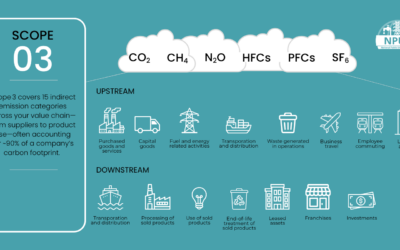Encouraged to Do Your Worst
Most people want to care about the work they do, and it goes without saying that leaders want them to perform their best. In contrast, though, workplace culture or team dynamics can inadvertently discourage good work. It then becomes paramount to recognize the cycle, understand what’s fueling it, and learn how to break it.
At every step in my career, I’ve witnessed the most passionate, dedicated team members getting discouraged when good work isn’t paying off and in the worst cases, getting burned out and leaving. I’ve felt the cycle myself: getting deeply invested in my work, feeling frustrated with the outcomes and the state of things, reinvesting and recommitting to improvements, but ultimately disengaging with the process. Eventually, this led me to a career in consulting and I’ve come to see this same pattern play out with clients as they start undertaking process improvement and organizational change.
The people that care the most in your organization tend to be leaders among their peers. They may not have formal authority, but they are likely a crucial part of your organization’s culture and others look to them for guidance. If your most passionate people are disengaged and discouraged, the lost performance is tangible. However, the biggest consequences are felt over time: a decline in morale, the loss of expertise and leadership, missed opportunities for improvement, and stalled growth. If you’re continuously losing your most passionate team members, who will be left? What is the culture like without them? What are you really rewarding and instilling in your current team?
It can be easy to blame this cycle on a lack of commitment, not wanting to work hard, or wanting higher pay, but the catalysts are not simply a lack of rewards and recognition. If you are noticing this pattern, take a step back and evaluate where you, your team, and current processes are today.
Catalysts
Business-as-usual hasn’t been “usual” in a long time.
This can manifest as taking on several new projects and initiatives in a short time, introducing new products or systems, or a high rate of turnover—particularly in leadership roles. Keeping up with constant change can be destabilizing and eventually lead to burnout. While change is inevitable in any organization, it is crucial to balance your initiatives and properly manage the change. Following a change management methodology will not only increase your likelihood of successful adoption, but it will also support your team through the change and help mitigate change fatigue.
Lack of follow-through.
There are many reasons work may be deferred or canceled. There will always be competing demands for time and some items end up pushed to the bottom of the to-do list indefinitely. Without communication, a project seemingly disappears, along with all of the effort that went into it. If this is happening regularly, it can be hard for team members to dedicate themselves to the next request. At the extreme, I’ve been told by managers to disregard projects from leadership because “they will just disappear in a few months anyway”. They’ve never been wrong. As an individual, you may not be in a position to make a call like disregarding a request; however, you can align your priorities and take advantage of opportunities to share your feedback. As a leader, be thoughtful about your requests. Make an effort to understand what else is competing for time, specify a realistic level of priority, and state why this work is important or how it will be used at the time of your request. Share updates, if the situation allows, especially if it’s decided later that work isn’t going to move forward.
There is a disproportionate level of effort to perceived value.
It’s frustrating and disheartening to spend hours on work that just checks a box. For example, generating a report may take several days but perhaps only a small portion of the data is needed by someone else. Take the agency and learn why this task is necessary. Who are you sending it to? How are they using the information you provide? After investigating, I’ve been surprised to learn where some of my “tedious” reports end up. In other cases, I’ve been able to build a case for modifying or even discontinuing low-value work. If you are a leader, you should be prepared to answer these same questions, even if it means doing a little digging. The exercise of documenting your processes end-to-end can highlight areas of value, opportunity, and waste. This requires that you critically assess whether the work is truly providing meaningful value and if the work is necessary. Tools like a SIPOC analysis or basic process flow chart can support this review. If the work is providing value, you’ve created a visual that can bring awareness and shift perceptions. If it’s not, change course or do not proceed. You may want to continue your analysis and identify process improvement initiatives that bring the level of effort back into alignment with value.
Setting the tone for the future
Be willing to change courses.
It’s never too late to re-evaluate how you’re approaching your work or what you’re asking others for. It may be intimidating to scrutinize your own work, but you’ll likely gain valuable insight into your processes by offering it up for improvement. Being open to input and change will encourage people to stay engaged and contribute more moving forward.
Demonstrate and encourage a process improvement mentality.
People who truly care often will have strong opinions and seek opportunities to improve their situation. These people can be your best resource for making changes if you leverage them. Facilitate collaborative problem solving and brainstorming sessions to encourage communication and gather input from end-users before decisions are made. Critical assessment and thoughtful planning will guide meaningful improvements. As a more direct action, document and standardize your processes to reduce the level of effort and bring awareness to the value of good work.
Become a change champion for new initiatives.
Following a change management methodology will support individuals, teams, and organizations through change. Change can appear short and simple, or complex and impactful, and thus change management activities can be scaled accordingly. Even a high-level approach will help you identify and address gaps, manage your stakeholders and communications, and mitigate change fatigue. Successfully completing your project, with your team members on board, will build trust and encourage continued engagement.
The End-All
Organizational and team dynamics may be actively working against people doing their best. If you find yourself discouraged, your best tactic is to ask questions. Focus on opportunities for process improvement and ways you can make things better in the future. You may pave the way for change, or it could lead you to something new. When you’re in the leadership role, be thoughtful and clear in what you’re asking for. Understand what is competing for your resources, know your processes, engage your team, and listen to the questions and ideas they raise. Supporting process improvement and change management activities will encourage new ideas and contribute to a willingness to invest in the work. Transparency, visibility, and communication will also go a long way in instilling a sense of value in the work you’re asking for. If you recognize the pattern and address the underlying issues fueling it, you can foster collaboration and engagement, encourage progress and forward-thinking, and capitalize on the passion of your team.



